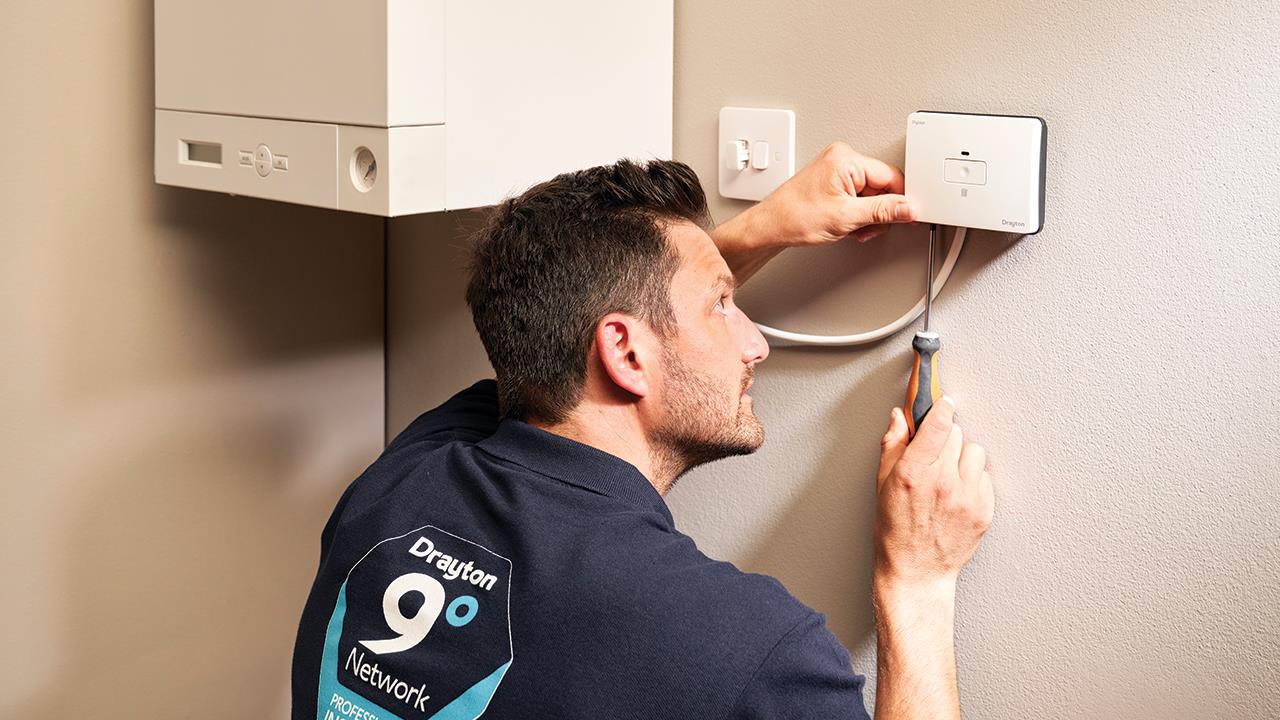

With many homeowners turning to heating control upgrades as a way to help improve the efficiency of their heating system, it’s important that installers are clued up on all the features that can offer energy-saving contributions.
OpenTherm is a protocol that allows heating controls and the boiler to communicate in order to better regulate the temperature flow through the heating system. Already widely used across Europe, this technology allows for maximum energy efficiency while always maintaining the desired set point temperature.
According to research by the OpenTherm Association, when properly used, OpenTherm can achieve 10 to 15% savings on energy use.
How does it work?
Many modern electronic heating thermostats currently use On/Off load compensation. This method of heating effectively adjusts the average water temperature within the heating system by cycling the boiler on and off periodically. In this setup, the water temperature produced by the boiler is fixed.
OpenTherm modulating heating controls installed with an OpenTherm boiler operate on a similar principle to On/Off load compensation, but the results are achieved more directly by adjusting the water temperature within the system from the boiler itself.
During ‘high load’ conditions, a high water setpoint can be requested from the boiler with OpenTherm controls. The water temperature requested will then lower over time as the room temperature approaches its target. The important difference here is that an OpenTherm boiler with OpenTherm controls will run for longer periods while producing water at lower temperatures, resulting in less energy being used and maximising the time spent in the higher efficiency condensing mode.
This technology is also going to become increasingly important as we move towards a low carbon future. OpenTherm and open protocols are key to unlocking optimum performance from renewables like air source heat pumps, by enabling these open protocols to ensure that the heat pump and heating control properly communicate and modulate.
How to identify OpenTherm compatibility
An easy way to tell if a heating control is OpenTherm compatible is to check whether it is certified. Some manufacturers have started to make this feature clear on their packaging, point of sale, and marketing materials. If it is not clearly indicated, other ways for installers to confirm this is to check the wiring diagrams or the OpenTherm Association website.
It is also important that installers check the compatibility of any OpenTherm control with the boiler, as some products have small differences in the design of the module. If the heating control’s OpenTherm is not compatible with the boiler, customers may find that their heating system does not work as expected and will not offer the same efficiency benefits.
By recommending a heating control that features OpenTherm, such as the new Digistat single channel wired and wireless versions, installers are able to offer their customers a highly-efficient heating system. By modulating the boiler and using residual heat within the system, less energy is required to reach the desired temperature which can often result in lower energy bills; something that, in today’s market, is a top priority for many homeowners. As such, the industry can hope to see these open protocols included in legislation to further help optimise efficiency and reduce carbon emissions in the UK.
If you'd like to keep up-to-date with the latest developments in the heating and plumbing industry, why not subscribe to our weekly newsletters? Just click the button below and you can ensure all the latest industry news and new product information lands in your inbox every week.